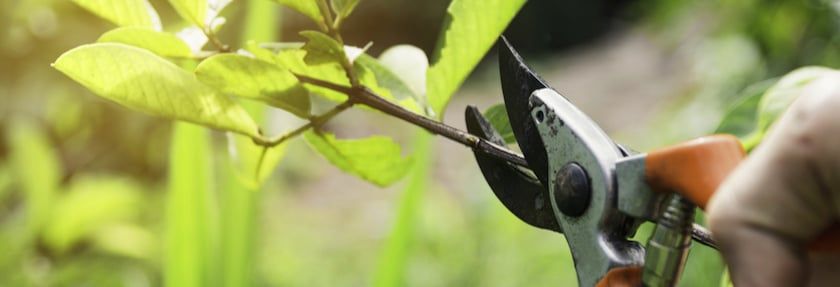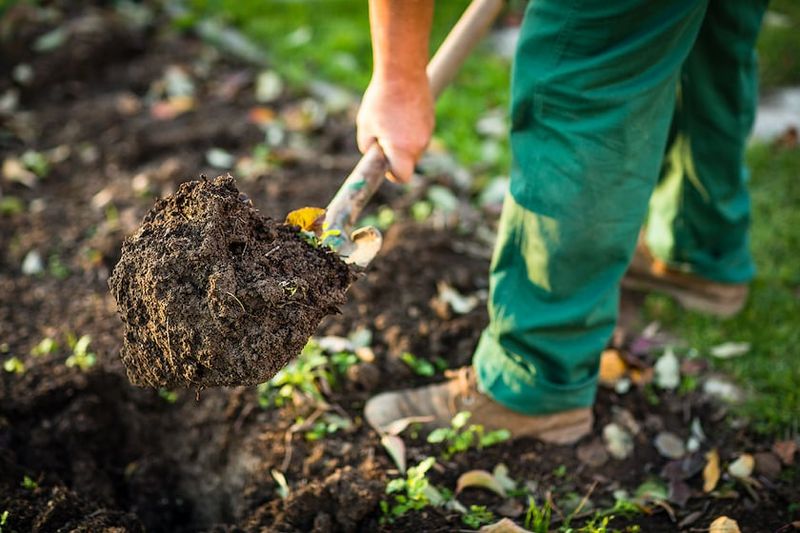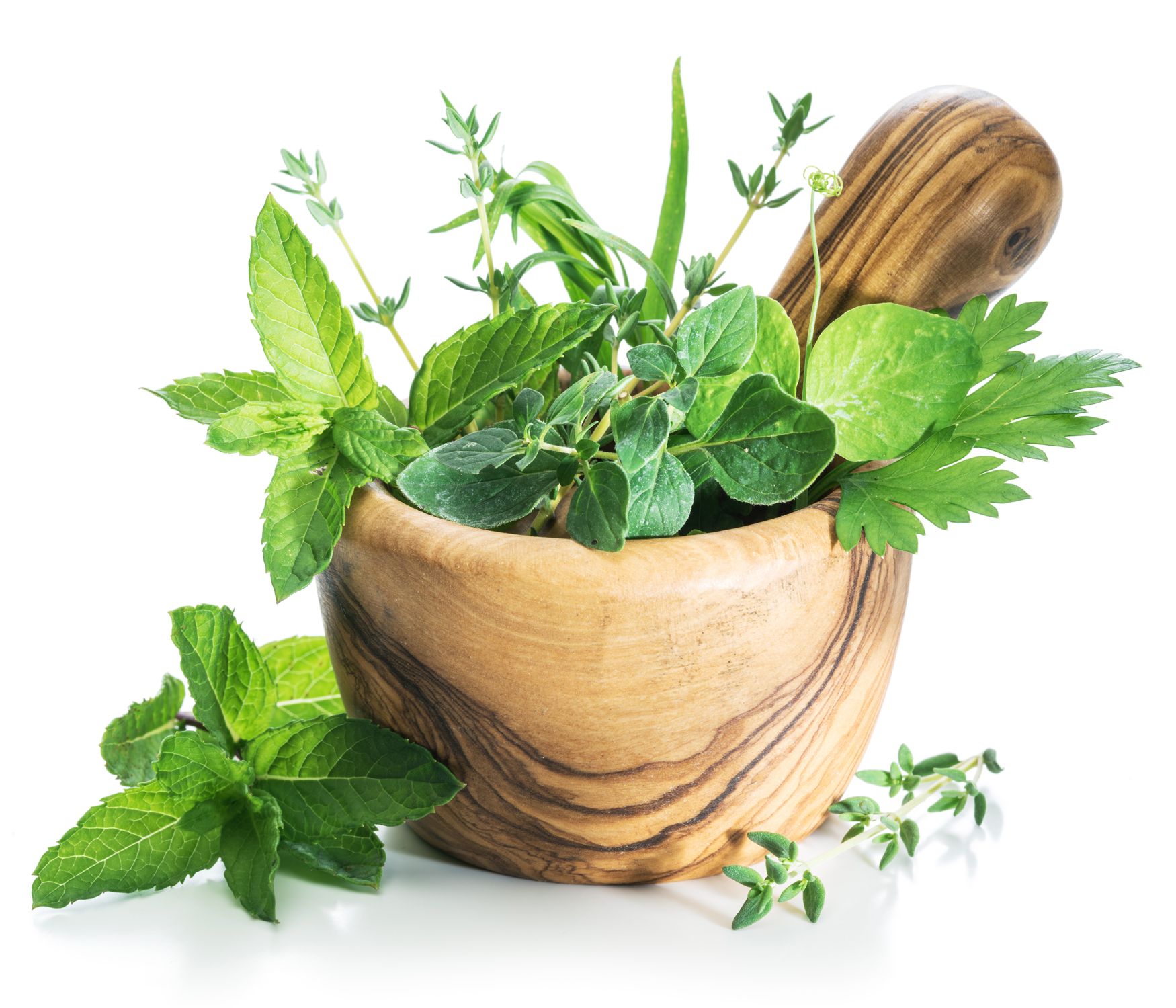Get Your Garden Ready for Winter


Spend a little time now for big results later
Depending on where you live, autumn is either just around the bend or already pulling up into your driveway. Your vegetable garden is shutting down for the year. There may still be some tomatoes and pumpkins to pick, but most of your harvesting is already done.
The “fun” part of the gardening season is over. Sure, you’re tempted to harvest the last of the vegetables or pick the remaining flowers and let your garden lie fallow for the winter. In fact, you’ve done that in previous years, haven’t you? (Admit it, we all have.) But the problem with that is simple: next spring there will be A LOT more work to do.
So it’s time to rise to the task. If you follow the tips below, springtime in your garden will be far less work and much more enjoyable.
Dig out weeds that moved into your garden
Mother Nature has a persistent habit of filling in blank spots in the garden—dandelions, bindweed, and others took hold. Deal with these freeloaders today.
You don’t want to give this year’s weeds a chance to grow in next year’s garden.
Dig up weeds with a good weeding tool like the CobraHead Weeder or with a trusty shovel. Dig down far enough to get the roots! If the plants are not seeding, put them in the compost pile. If the plants are full of seeds, or if they are particularly invasive species, put them in the trash or the burn pile.
Remove spent plants
The remnants of your corn stalks, tomato plants, squash vines, and other vegetable plants can harbor insect pests and disease. Plus, they look untidy.
Leaving those old, dead plants in your garden gives unwanted insects a place to lay eggs and overwinter. Removing spent plants from the soil is a great way to keep this year’s insect pests from invading next year’s garden.
Throw the old plants into the compost heap or till them into your garden soil so they can help fertilize the plants and seeds you put in the soil next spring.
Prepare your soil now for next spring
Fall is a great time to add soil amendments like manure, compost, bone meal, and kelp to your garden and flower beds.
Adding nutrients now gives them time to start breaking down and enriching your soil. Doing the work now also ensures you won’t have to wait for your garden to dry out before you can work the soil in spring. Digging and amending now means you will have already done some of the “heavy lifting” (literally) when the busiest time of the gardening year arrives.
If you till your soil, doing that job now will help improve your soil’s drainage before winter arrives.
After adding soil amendments now, cover the bed with a sheet of plastic so fall and winter rains won’t wash them below the root zone of next year’s plants.

Prune some perennials
Autumn is the perfect time to prune back some perennial plants. But other plants prefer NOT to be cut back in the fall.
For example, herbaceous flowering perennials such as bee balm (Monarda), phlox, catmint (Nepeta), daylilies, salvia, and yarrow can all be pruned back.
Many perennials that have seed heads that birds feast on in the wintertime should be left for feathered friends. These plants include cone flower (Echinacea), black eyed Susan (Rudbeckia), sedum, and ornamental grasses.
Some woody shrubs (and berry bushes) like to be pruned in the fall, and others don’t. Blackberries benefit from a good fall cut-back, but blueberries prefer a spring pruning. An internet search before you start pruning will pay dividends.
Plant new bulbs and divide the old bulbs
Planting spring-flowering bulbs is a time-honored fall tradition that some liken to burying treasure. Sometimes you forget all about the bulbs you planted until the flowers bloom in the spring!
Remember the bulbs you planted last fall and in years past? Now is the perfect time to dig them up if they looked too crowded this past spring. Sometimes you might have to guess where to dig, so carefully probe 4 to 6 inches away from where you think the bulbs will be to avoid cutting them in half with a shovel.
Gently dig up the bulbs and separate the bulb-lets. Then replant them all and wait for next spring’s display of new flowers.
Spread some compost
If you have a compost pile or compost container, the organic materials you added during the spring and summer are probably fully broken down—so spread it around in your garden beds.
Using this rich homemade compost is a great way to top-dress beds, fertilize around perennials, shrubs and trees, and generally improve all your soil. Besides, digging out the finished compost now gives you room to put more green and brown garden waste in the compost bin.
This will keep your compost microbes insulated against the winter cold , and give them something to “chew on” during the cold season.
Consider cover crops
Fall is a great time to sow cover crops like rye, vetch or clover. These crops help break up compacted areas and prevent soil erosion. Plus, when you till a cover crop under in spring, it increases the amount of nutrient-rich organic matter in the soil.
To increase nitrogen levels in your soil, plant legumes such as field peas or clover.
Try to plant cover crops about a month before your typical first-frost date. That will give you a solid month of growth before winter weather shuts down your garden for the season. Don’t be afraid to talk to “old timers” for suggestions for the best local cover crops.
Mulch, mulch, mulch
Mulching is something you can do any time of year, but mulching just ahead of the winter season is like putting a nice warm blanket around plant roots to protect them from the cold.
The freezing and thawing that naturally happens during wintertime can wreak havoc on plant roots, which can get damaged from all of the soil heaving. Adding a generous layer of mulch to the soil surface will help to regulate soil temperature and moisture, and helps plants transition from warm fall weather to the freezing cold of winter. If you have any root vegetables left in your garden, make sure to mulch these, too, as this will help protect them against hard freezes and stretch your harvesting season.
Clean and sharpen tools
We all know that clean, sharp yard and garden tools last longer and perform better. But who has time to clean and sharpen during the active planting and growing seasons?
That’s why tool maintenance is almost always thought of as a cold-season chore. Now is the time to thoroughly clean shovels and digging tools—and also cutting tools.
Remove any hard dirt or debris—with another tool if necessary. Remove any rust with sandpaper or a wire brush. Sharpen shovels and hoes with a mill file. And sharpen pruning shears and loppers.
When all the blades and surfaces are clean and sharp, rub them down with a well-oiled rag to seal the metal from oxygen and moisture.
Tags:Garden & Landscape

Acreage Life is part of the Catalyst Communications Network publication family.
















